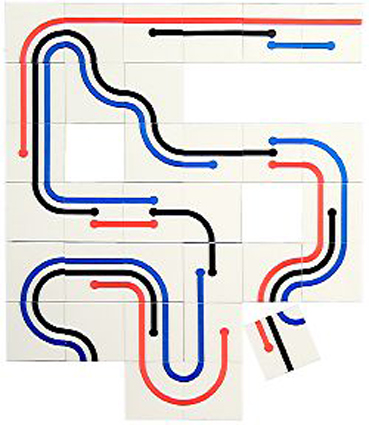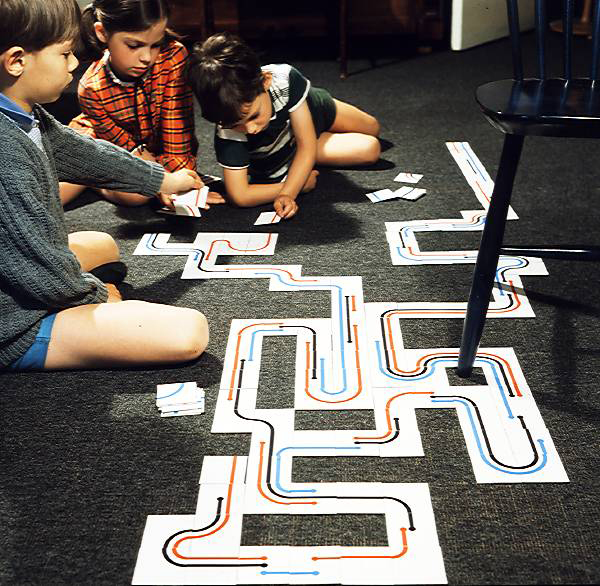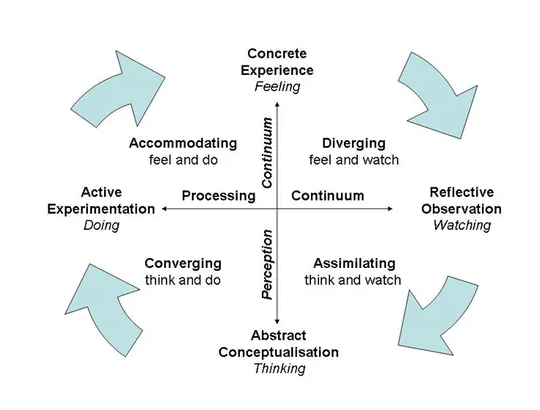In her book Teaching Design, author Meridith Davis comments that todays “design fields began as trades, rather than professions” with many of the practical skills being acquired through making (2017). The rules of graphic design are not enshrined or enforced by any governing body, in the same way that a profession such as medicine may be. This view of the practical being intrinsic to the teaching and learning of design is reinforced by designer and educator Paul Shaw in Steven Hellers book, The Education of a Typographer, when he states “I put practice first, not only because it is what students…desire the most, but also because I believe history and theory must play supportive roles. I use history to place current typographic practice in a continuum that extends back to the invention of the codex. Finally, theory is introduced as a means of better understanding the practices of the past and their continued relevance today.” (p.12 2004). Shaw believes the best approach is “to intertwine practice, history, and theory-in that order.” The idea of making is intrinsically linked to the idea of craft, of creating something by hand with skill. Christopher Frayling in his book On Craftsmanship (2011) when discussing the term craft and it’s importance he states “to educationalists…the word is associated with learning by doing-experiential learning – rather than learning from books or from screens”(p.12). Within my own experience, as a student and then an educator, the ability to physically manipulate and interact with an object relevant to the subject has always enabled me to deconstruct and understand the concepts relating to it in a deeper manner. Though I had read about baselines and line height when I was a student, it was only once I started experimenting with letterpress blocks that I understood how the space a letter takes up on one side of the page can affect the layout of the type on the other page.
Influential design teacher Inge Druckrey believes that in order for a student to learn design they must first learn to see. In the 2014 documentary about her by Edward Tufte she states “Training the eye is very very important. You can’t come up with ideas if you don’t see first.” In order to create designs of aesthetic value they must be taught to observe current forms and to analyse the forms they create in their own work. Central to Druckery’s form of teaching are manual exercises that involve giving students some kind of restriction, whether it is on font, layout or image. One example is she “gave students a 9-square grid, which as ordering principle allowed them to come up with a coherent composition.The actual design elements were up to them.” She believes that key to this style of learning are the restrictions, “The limiting is important so that students have a very clear playground set up and it helps them to focus.”. I feel this is especially relevant in current Graphic Design teaching environments where when asked to complete a design task digitally a student can often be faced with a paralysis of choice with a seemingly infinite choice of typefaces and formats available. By placing a restriction on the exercise it is easier to guide a student towards the intended learning outcomes.

This style of learning through play and learning through doing can even be seen in the toys designed by Ken Garland and Associates for the toy brand, Galt. The version shown here uses a set of printed cards with strokes in different shapes and terminations that can be combined in various different ways.

I became aware of Kolb’s cycle when working on the Associate Fellow of the HEA award when I began teaching. The cycle is outlined on Kolbs website (2021) as a four stage cycle:
“1. Concrete Experience – a new experience or situation is encountered, or a reinterpretation of existing experience.
2. Reflective Observation of the New Experience – of particular importance are any inconsistencies between experience and understanding.
3. Abstract Conceptualization reflection gives rise to a new idea, or a modification of an existing abstract concept (the person has learned from their experience).
4. Active Experimentation – the learner applies their idea(s) to the world around them to see what happens.”.
Kolb believes that an effective learning experience sees an individual progress through the cycle in order. This order can be broken down into experience > reflection > conceptualisation > testing > repeat, the cycle is repeated throughout a learning experience to enable a growth in knowledge. In an article about the subject, author McLeod states that learning is an “integrated process with each stage being mutually supportive of and feeding into the next. It is possible to enter the cycle at any stage and follow it through its logical sequence. However, effective learning only occurs when a learner can execute all four stages of the model. Therefore, no one stage of the cycle is effective as a learning procedure on its own.”
I believe this syncs well with Druckery’s concepts of seeing. That in order for a student to progress in their learning and accumulation of skill they must observe and create as part of the concrete experience phase before progressing to analyse (Reflective Observation of the New Experience), refine (Abstract Conceptualization reflection) and repeat (Active Experimentation ).
Paired with Kolbs learning cycle is the setting out of four distinct learning styles. These styles are based on the the stages of the learning cycle and they are used to help understand that different people prefer different learning styles. McLeod explains these styles as the “product of two pairs of variables, or two separate ‘choices’ that we make, which Kolb presented as lines of an axis, each with ‘conflicting’ modes at either end. Kolb believed that we cannot perform both variables on a single axis at the same time (e.g., think and feel). Our learning style is a product of these two choice decisions.”

When reflecting on my own project and how it could be used to teach, I must consider contemporary teaching environments. Many of Inges methods rely on the use of physical spaces and mediums. At the moment with so much of our teaching being online due to the pandemic how could the tools I create be used as part of online or hybrid teaching? The way we learn online and interact with digital resources is very different to that of learning on a physical campus. Professor Gilly Salmon outlined a framework for online learning called the “The Five Stage Model”, though it was originally written while working for the Open University and published as part of her book E-tivities: The Key to Active Online Learning (2013) it has since been updated and built upon to be inclusive of many different learning environments as detailed on her website (2021). The stages are as follows:
“1. Access and Motivation
2. Online Socialisation
3. Information Exchange
4. Knowledge Construction
5. Development”
The first stage of the model, “Access and Motivation”, is an important stage to consider for my project. This stage is about introducing the learner to the environment, giving them access to the logins and tools needed and demonstrating early on how they can progress through the different stages. If I wish to teach students about typography and letterforms how can I give them access to the tools I wish them to use? If I built some kind of online tool I could make use of social media, encouraging users to create something and share it online. This would allow them to progress through the Online Socialisation and Information Exchange stages. Knowledge Construction and Development could be cover by weaving some theory into the tool to allow the user to evaluate the work they have created against other examples.
References
- DAVIS, M., 2017. Teaching Design: A Guide to Curriculum and Pedagogy for College Design Faculty and Teachers Who Use Design in Their Classrooms. Allworth
- GARLAND, K., 2020. ken garland & associates:design for toys & games:[viewed Feb 17, 20121]. Available from: http://kengarland.co.uk/KGA-toys-&-games/galt-toys/
- TUFTE, E., 2012. Inge Druckrey: Teaching to See [viewed May 10, 2021]. Available from: https://vimeo.com/45232468
- KOLB, D. and KOLB, A., 2021. Experience Based Learning Systems [viewed Apr 19, 2021].
- MCLEOD, S., 2017. Kolb’s Learning Styles and Experiential Learning Cycle [viewed Mar 19, 2021]. Available from: https://www.simplypsychology.org/learning-kolb.html
- SALMON, G., 2020. Five Stage Model [viewed May 10, 2021]. Available from: https://www.gillysalmon.com/five-stage-model.html
- SALMON, G., 2014. Scaffolding for Learning [viewed May 12, 2021]. Available from: https://www.youtube.com/watch?v=4pKsZ6dVhlI&ab_channel=DavidYammouni
- HELLER, S., 2004. The Education of a Typographer. New York: Allworth Press
